|
Wilbur's reaction to everything: concern. Photo by Kate Ota 2024 One type of writing resource book I love is a reference I can go back to time and time again. The Emotion Thesaurus by Angela Ackerman and Becca Puglisi is one such book (series!) that I keep next to me whenever I edit. However, I'm always on the lookout for more! I found 1,000 Character Reactions from Head to Toe by Valerie Howard while browsing Amazon and received it as a gift over Christmas.
Overview At just 88 pages, this book is a quick read. What you get is basically a thesaurus of body parts in order from head to toe (plus some overall things like skin). Each entry contains actions or sensations associated with that part of the body. Sometimes the action is linked to an emotion, such as cheeks burning with embarrassment. After each short list (which is never longer than a page plus a few lines) there are empty lines for you to write your own entries for that body part. My Experience I felt like each entry's list was too short. I also wanted more of them connected to a cause, like embarrassment, since a reaction is happening because something is causing it to happen. Some body parts were also conspicuously absent, so don't expect this to help you write a romantic encounter, for example. I think the empty lines are a good idea, because plenty of reactions aren't present, but it also made it look like the author didn't do enough of the research for you. Is It Worth It? This book is $5 for a paperback on Amazon and $0.99 on Kindle, though the empty lines for you to write on become useless on the Kindle. If you're trying to add more reactions and emotions to your writing, I think The Emotion Thesaurus is a better option, but if your budget can't accommodate a $17.99 Emotion Thesaurus at the moment, this book could be a good substitute or even just an entry into the concepts if the larger book is too intimidating. If your budget can handle either book, go with the more robust Emotion Thesaurus. Have you used 1,000 Character Reactions from Head to Toe? Did it help you improve your writing? Let's discuss in the comments!
0 Comments
A visual representation of a developmental edit. Made on Canva by Kate Ota, 2023 This week I'm discussing a new experience my writing group engaged me in: a developmental edit. I'd never done one before, so I read about what they entail and what to look for before starting the process and did another refresher after I finished reading the manuscript. I thought sharing my experience could help someone else who either has been asked to do a developmental edit, wants to attempt to developmental edit their own work, or is curious about what this entails.
What is a Developmental Edit? A developmental edit is what I think of as an "early stage" edit, so you're not polishing sentences, you're polishing structure and plot and character arcs. Big picture stuff that could cause you to change huge sections of the story. No point fixing a sentence in a scene that's about to be removed. A dev edit is performed after drafting (at the earliest) but before line/copy edits. In the case of my writing group, it was done in lieu of a beta read. If you hire a professional to do a developmental edit, it is generally done after beta reading. How Do You Developmental Edit? As I read, I tried to keep in mind the big picture items: plot arc and character arc. The story was pretty linear, so structure wasn't a big concern in this case. However, if reading a non-linear story, be sure to keep an eye on structure too. I made some notes in line, but not as often as I do for beta reads. I didn't correct every small typo I came across unless it affected my reading/understanding. After reading, I put together an edit letter. There are lots of outlines online for what an edit letter should contain, so I followed one of those to make sure I hit the big points: positive feedback, setting, characters, character arc, pacing, dialogue, and plot holes. I kept my feedback a big picture as possible--don't write an entire page about one setting's single problem, or one line of dialogue that didn't fit. Elements of the Edit Letter Positive Feedback: This is huge to include in a developmental edit. Since this writer was going to get edit letters from the entire group of us, that could lead to an overwhelming amount of suggested edits. It's crucial to include what worked well, so that the author knows what NOT to change, and so they don't feel disheartened if the edit letters are long or require a lot of work. Setting: Even if set in the real world, the setting will still matter to the reader. Include if you could picture the setting in each scene, what elements were often missing (think sights/sounds/smells/tastes/touches), and if you understood when the scenes took place (night/day, years, seasons, etc.). Feel free to call out great things here too, of course, especially settings you felt worked well in contrast to ones that didn't, so the author can look at their own work to see what they did and pull that into the less successful scenes. Characters: For this section, I talked about all the characters except the main character and their arc, which is the next section. Here is where you should things like the number of named characters (overall or in a particular scene were there too many? Too few?), the names of characters (were any too similar? Did the author accidentally use a celebrity/infamous/famous character name?), and the purpose of side characters (could any be combined? Did you mix any up? Was there someone you felt was missing?). Positive feedback can go here too, like naming a favorite side character and why, mentioning a great character moment, etc. Character arc and pacing: I followed Save The Cat Writes a Novel as my guide for when certain beats should have hit, and used that to inform me on pacing, though often I could tell by gut if anything was running too long or happening too soon. Save The Cat acted like a nice quantitative measurement to back me up and help the author figure out how much to move their beats. The same is true for pacing plot and pacing the character arc. They should be two separate sections in the edit letter, despite the similar method. Character arc is the beating heart of a novel, so be sure to pay special attention to it: did the character complete their arc successfully? Did they have a lowest moment? Was the character arc driving the plot arc or vice versa? (The "correct" answer for that one will depend on genre, though agents right now love to talk about character driven stories.) Dialogue: Feedback here should include whether the dialogue felt natural in general (there will always be exceptions, like a character who is using a second language might be a little more stiff), if dialogue from different characters felt too similar, and if the dialogue to narration balance felt correct. That last one will depend on genre and taste, but go with your gut. This is also a place for positive feedback: did anyone have a great one liner that made you laugh? Did any character have stand out dialogue in general? Plot Holes: A little more general than the plot beats discussed in the pacing section, the plot hole section is where you discuss other problems with the plot or world. Even if set in the real world, there can be holes (for example: you may have to tell your author that Interstate 80 doesn't go through Colorado, it goes through Wyoming). More often, you'll need to point out questions that come up around "why did the characters do X and never even thought of the much easier method Y?" You may, but you don't have to, suggest possible solutions. However, don't get attached to your ideas, as the author may come up with a different solution that works better for them. If there are other thoughts or comments you have left over, feel free to add more sections. For different genres, you may need other sections such as Romance, Magic System, Alien Culture, Mystery Elements, etc. Every story will be different, so feel free to write an edit letter that best suits the manuscript you're editing. In the end, you'll send your edit letter to your author and hope for the best. Keep in mind, everything you're written in your letter is a suggestion, not a legal requirement. If the author loves and incorporates all of your feedback, hooray! If the author ignores every word you wrote, well, it's their novel. Odds are, something in the middle will happen, and that's great too. All you can hope for us that the author takes away at least one thing from your letter to make their book better in their eyes. Some Quick Don'ts
Have you ever done or received a developmental edit? Was it worth it? Do you recommend your editor? Let's discuss in the comments! Image made on Canva 2023 As promised last month, I'm going to share lessons from my first DNF (did not finish) of the year. And just in time for Halloween! Nothing scarier than a book full of promise falling flat on its face, right? I will not be naming the book, but to give context, it was on a list of best indie books of the year it was published, and the premise sounded fantastic. In fact, I'd hoped to use it as a backup comp to one of my novels. It's a self-published adult near future scifi, specifically biopunk. I stopped reading on page 120 out of 438 pages (27%). Rather than forget this and move on, I choose to take away lessons from books I didn't enjoy.
1. Choose Your Editor(s) Wisely If you're going indie, choose your editor or editors wisely. Some folks choose to forgo an editor, and that's your choice. However, if you pay someone to edit in any capacity (developmental, copyedit, line edit, etc.) make sure you choose someone who does a great job. Take advantage of offers to do a sample edit before you commit. If your novel is riddled with typos and plot holes, your readers will not stick around. 2. Don't Info Dump We all know not to do this, but in our own stories we always worry if the reader knows enough. Our beta readers might wonder about specific questions or ideas and we think we have to answer every one of them. However, if you info dump, your readers will know and will not be happy. We all need a certain amount of information to keep reading, but a trickle is better than a firehose to the face. Give enough to avoid confusion, hold back enough that they want more. We all do so much worldbuilding in the background, and it's tempting to shove everything in the novel, but remember the iceberg principle. Show enough worldbuilding to prove to the reader that there is much more below the surface--whether or not you actually wrote more below the surface doesn't matter. The book I DNF'd had such a giant info dump that I ended up skimming it--which is the beginning of the end for me when I read. 3. Avoid "As You Know, Bob" As you know Bob, or maid and butler dialog, is when two characters discuss something they both already know for the benefit of the reader/audience. This is made even worse when it's used to info dump. Your reader will know it's happening, they'll wonder why this conversation is happening, and they'll soon realize it's for them. That ruins the illusion of the reading experience. The book I put down had so much of this that I stopped trusting the author to tell me a good story. Maybe the plot was going somewhere interesting, but how the story is told is most of the battle. 4. Know Your Stuff If you're writing about something technical, let's say gene editing, you better be up on the latest developments. People who love scifi tend to also love science. Especially if you're doing a near-future setting, you need to know what's already happening. Otherwise, you end up sometimes creating an entire plot around science that's out of date, and your plot problems could be solved with science available right now. Your readers will know and will be annoyed. This was my biggest factor in putting down the book I DNF'd this time. It got science wrong that I did in grad school, and it was so wrong it made me cringe reading it. This lesson can be true outside of scifi too, for example people who know horse stuff will complain about horses written poorly in fantasy (there was a whole chapter about horses in Putting the Fact In Fantasy.) So if you include anything in your book that you don't know a lot about, be sure to do your research! Those are the big takeaways from the first book of 2023 that I didn't finish. What are some things that make you put a book down? Have you improved your writing by seeing what doesn't work? Let's discuss in the comments! A retro cover of I, Robot depicting a scene from one of the stories within. Isaac Asimov is a famous mid-twentieth-century scifi writer of both novels and short stories. Aside from I, Robot, his most famous work is the Foundation series (which won the one-time Best All Time Series Hugo Award in 1966, kind of a big deal). He won many awards, and now some awards, magazines, and even robots are named for him. Most of his work includes robotics, and his three laws of robotics have been at the very least considered if not adapted by many who include robots in their own writing. If you're writing robots, cyborgs, or even AI in your scifi, you need to read iRobot. Plus, it's got some thriller and horror elements, and robots fit the Halloween vibe, right? So it's the perfect time to read it.
1) Just like Frankenstein, don't be afraid of a unique structure I, Robot, as it sits on a shelf today, is not how the contents were first presented. Now, it's a series of stories with an external story woven through that connected them all. Initially, these stories were published solo from 1940-1950. If all of the stories had been presented in chronological order with no external structure to guide me, I would have thought this was very choppy and didn't flow. The structure being handed to me up front made it easier to understand these were short stories stacked on each other in a trench coat. It may be a challenge to put together, but a unique structure could be just what your complex novel needs. 2) Play with your worldbuilding Each of the short stories delved into a different aspect of how the laws of robotics worked, or could inadvertently fail, and also included what was going on socially with how the world viewed robots. It was a really cool way to see how this world functioned and it was fun guessing at how the three laws of robotics would get messed up in each tale. If your story world has set laws (socially or physically), see how those laws interact, if they can fail, or if they can bend. Maybe your characters don't even understand the laws fully, so what they consider a rule is actually much more complex. Feel free to play and even write short stories about your world to get to know it more deeply. 3) Anticipate future social norms One thing I appreciated about I, Robot was that the main character, the robopsychologist being interviewed in the external structural storyline, was a woman. This was put together in 1950, and that character appears in the short stories too, so she wasn't just slapped in there for fun. While she was the only woman prominently featured as a scientist, she was so necessary. If I'd read this book and it had been all men in science despite the mid-to-late 2000s setting, I wouldn't have enjoyed it. If your writing is set in the future, think about how it will read in the future. Will that joke you made still be funny, or could it be harmful? (The gauge here is to "punch up, not down" i.e. make fun of the powerful not the people with equal or less power than you. Satire about the president: will probably age well; joke about the poor: no.) Will your inclusion of different genders (and think full spectrum here) be appreciated? Probably! So don't be afraid to think of the future socially just as much as technologically. (Though Asimov wrote a woman in STEM as a prominent character, note there were plenty of people reporting his sexual harassment of women during his lifetime. So, write as he wrote, but don't do as he did.) Those were my big writing takeaways from Isaac Asimov's I, Robot. If you're looking for the plot from 2004's I, Robot with Will Smith, you may end up disappointed. However, just think of that movie as another short story that would fit right in to the collection. It didn't surprise me that the Hollywood version was so different from the book, the same was true for Frankenstein! Have you read I, Robot or other Asimov novels and short stories? Have you learned any good writing lessons from him? Let's discuss in the comments! The Amazon cover for the book features the green classic monster, not as described in the book. Fall is spooky season and one of the main Halloween monsters is of course Frankenstein's monster, sometimes called Adam. Since it is a foundational text to scifi--the very first scifi, in fact--I decided to read the original Frankenstein by Mary Shelley. Rather than review it, I decided to write about what I learned about writing irom this classic novel (or really a novella, it was about 110 pages).
1) Don't be afraid of a unique story structure Frankenstein is actually a letter written by a sea captain to his sister about meeting Dr. Frankenstein and that man's story. So the meat of the book is "story within a story" since you know in the end things will circle back to that boat captain. At one point, the story becomes the monster's story being told to Dr. Frankenstein being told to the captain. Like Russian nesting dolls. However, this complicated structure was made very clear and even acted as foreshadowing of excitement when the start of Dr. Frankenstein's tale got a little dry. 2) Don't overdo the backstory While it may have been the style of the time, modern readers now don't need Dr. Frankenstein's life story to begin with his parents meeting. When I saw that was how the story began, I was dreading the rest. It didn't get interesting until Dr. Frankenstein left for college. So while it's good to read classics, keep in mind how very different the market is today, and don't accidentally pick up on very out of date style choices. 3) Build sympathy by showing what your characters wants most We were all a little afraid of Frankenstein's monster after his first kill, naturally, because he's not on the page much to defend himself. However, he makes it clear exactly what he wants: a lover. He is so intensely lonely and in need of contact that after he explains it, you can't avoid sympathy. There is even some sympathy for Dr. Frankenstein when he just wants to protect others. Get your readers to choose sides by showing a deep want and explaining why--and why they can't have it (yet). 4) Keep up with the latest innovations Mary Shelley was inspired by Galvanism and advances with electricity. If she'd only stayed aware of what was going on in the literary world, she wouldn't have run into the concepts that allowed her to conceive of Frankenstein. When looking for inspiration, look at innovations in fields that excite you: space, medicine, engineering, environmental science, oceanography, etc. Even keeping up with new historical finds in archaeology or anthropology, if you're more of a history/fantasy writer. You never know when you'll run into something that will inspire, so get out of your typical bubble. Those are my big takeaways from Frankenstein for writers. I will admit I was very surprised that a lot of classic Frankenstein tropes weren't in the original book--no castle, no Igor, no villagers with pitchforks and torches. He literally made his monster in his dorm room. (Try explaining that mess to your R.A.) I think he was even described as yellow, not green. So the Hollywood-ization of Frankenstein has clearly overshadowed the original for my entire experience. Kind of wild! Have you read Frankenstein? What were your writing (or reading) takeaways? What are some of your spooky season favorites? Let's discuss in the comments! If you're friends with any writers, there may come a time when you're asked to beta read their book. Maybe you're a writer yourself, maybe not, but either way beta reading is different from reading a typical book. If you've never beta read before and don't know how, this post is for you! Here are five steps for how to beta read.
Step 1: Upfront Questions Before you agree to beta read, ask the writer some key questions. Your goal is to determine if you're the right audience for this book. Ask for: genre, age group, word count, brief pitch.
Step 2: Set Expectations After you agree to beta read, ask the writer what their expectations are.
Step 3: The Read Now you're ready to read.
Step 4: Summary After your finish reading, you may have some overall thoughts to put together in a summary.
Step 5: Letting Go
Ready to go beta read? Have more advice for beta readers out there? Let's discuss in the comments! I couldn't get the pencil to sit behind Wilbur's ear, but otherwise, it's a pretty close re-creation! Photo by Kate Ota 2023. Story Genius: How to us Brain Science to Go Beyond Outlining and Write a Riveting Novel by Lisa Cron is one of those writing books that I constantly hear about. After my lackluster experience with the similarly lauded Bird by Bird, I worried this would also be a stinker. However, I had an hour to kill at a Barnes and Noble, and when I spotted Story Genius, my curiosity outweighed my hesitance.
Overview Story Genius breaks its advice into a couple sections, but in general it gives instructions on how to plot from idea through first draft. The main focus is to create a story that has a cohesive character arc and an external plot that specifically drives that arc. It also includes how this approach appeals to the brain so well. There are templates and spots where the book instructs the reader to stop and do an exercise that builds toward having a draft. My Experience I highlighted so much of this book. From the advice on point of view to the tips and tricks for each stage of brainstorming and outlining. This book really appealed to how I usually plot anyway, but added ideas to make that even better. I can't wait to try this method, not just with a fresh story but use it on my current WIP to make sure my external and internal plots mesh well. Is It Worth It? I bought a paperback for $14.99, but if e-book is your thing it can be yours for $9.99. Honestly, this book is precisely for the type of writer that I am. I wish I'd bought it sooner, because I think I'll incorporate its method into every project from now on. I think this book is 100% worth the price! Have you read Story Genius? Have you used the method? What did you think? Let's discuss in the comments. Recently while querying, I've noticed more agents asking for optional things like links to mood boards, playlists, or Pinterest boards. There's even a whole pitch event on Twitter around mood boards. I thought I'd take some time to help anyone struggling to figure out what mood boards are in relation to writing projects and a couple (free!) resources to make them. What is a mood board? A mood board is a collage of images, which can include minimal punchy text, which conveys the mood (or as the youths say the vibes) of your story. This includes setting, tone, a sense of character(s), genre, and important visual elements/motifs. If including a quote, it should be short and encapsulate the theme of the novel. A mood board can be a Pinterest page, or you can arrange images into a collage that's a single JPEG using free sites like Canva. Why make a mood board? A mood board is good for more than just pitching on Twitter or sending to the rare agent who asks for it in their Query Manager form. The mood board can help you as the author get back into your story between writing sessions. The process of creating one also forces you to think about the important elements, characters, and places in your story. If you've never thought about tone or theme, it may even bring one out of your subconscious. Where do images come from? If you're making a mood board for just you, and never plan to use it for marketing (or perhaps even pitching) then don't worry too much about copy written images you find on google. Go ham. If you plan to use it for any type of marketing (or pitching) it's safer for you to stick to royalty free images. I like using Unspalsh, but there are other options as well. If building your board in Pinterest, obviously you're only able to use that. The board then stays on Pinterest, which can be fine if using it only for yourself, but tough if your goal is to build one for a pitching event. You can layer text over an image in an editing site like Canva to create a background to match your chosen quote. It may be a struggle to find exactly what you're using for, so change up search terms and feel free to get creative in finding the right matches for your project. Collect more images than you plan to use, then select your final choices later. How do I make them a collage? If building a collage, you can use a free site like Canva. Choose a template that puts 5-9 images of various sizes together. Choose your template wisely, since it may dictate portrait vs landscape oriented images. If you're not a fan of online graphic design options, there's always good old fashioned Microsoft Paint. What are some tips and tricks? One major trick to a mood board is keeping your eye on color. You don't want a ton of competition, and you want it to look cohesive, suggesting your story is cohesive. Choose no more then 3 main colors to include. Ideally, you'll have some muted tones and one that pops. The exception is if color is a huge part of your story, for example if it takes place during Holi, or if color is associated with specific nations (like Avatar: The Last Airbender.) Another tip is to focus one the main character(s) or setting, don't try to include every subplot, side character, or place. You want someone to walk away from your board with a general impression of your story with minimal words. Confusion is killer. Don't focus on finding perfect matches in the photos. You'll never find just the right stock model or angle or city for your fictional characters/world. Instead, go for the emotional impact of the image. Have fun with it! Even if using it for a pitch event or in case an agent asks for one, the mood board's main audience is you. Example Mood Board Let's do an example for something everyone is familiar with: Star Wars Episode IV: A New Hope (aka the original). I searched for images as if Star Wars doesn't already exist, so no cheating by searching for droids, stormtroopers, etc. Let's pretend this is a whole new concept and none of those are options so that you SFFH writers know how to get the concept of your vivid fictional creations across without having to do visual effects yourself. (Or you can commission an artist.) Some stock images I searched for were: space, desert, red laser, hair buns, moon, explosion, black hallway, robotics, fighter plane. Many more terms generated nothing useful including glowstick, duel, robe, telekinesis, epic, hope, and hero. Here's what I collected: You can see there's a lot of red, blue, black, and white. Since the blues are pretty soft, I can get away with using all four colors if red is the one that pops. I wanted to make sure it's clear Star Wars is SciFi, so I kept the robot and stars, and lost the fighter plane. I kept the explosion to show action, and the guy looking up at the moon to show Luke's desire to go on an adventure--that's a mood right there. Either the hallway or the moon would be good to put a quote over, but I felt the moon a little more. I cut Leia's hair buns, because while accurate to the story, they didn't fit the adventure vibes of the other images. The red Star sign glows like a lightsaber, but it didn't get across the idea of a lightsaber, and the word star might be too on the nose. So it didn't make my final cut either. I went to Canva and searched for collage templates. I chose one that had 7 images, uploaded my images, and arranged them. I decided to place my two red images in opposite corners, for balance. I also searched for iconic quotes from Episode IV, and chose "That's no moon..." because it had an ominous, dangerous, and clearly SciFi feel. The other images ended up where they did purely based on orientation that the template dictated, and I'm okay with that. Last, I changed the background to black, because it looked better to me. Your mood board is all about your taste, so follow your gut. Here's my example mood board: Does it convey Star Wars: A New Hope perfectly? No. It's missing a ton of characters, events, and technology. Does it capture the idea of a SciFi story about a guy wanting and then having an adventure, which includes some twists? I think so.
Obviously, this isn't something I was deeply invested in making perfect, so when I make one for my own stories, they tend to have a little more nuance/insight to them. However, I hope you found this mood board tutorial helpful or inspirational and maybe you're tempted to go make one for your own project. Have you made a mood board for your writing? Was it helpful, or was it a major challenge? Do you have more resources for other writers making their own boards? Let's discuss in the comments! Pipetting hand cramps are real. Photo by Louis Reed on Unsplash Have you ever read a book that depicts someone with your job, or at least in your field, and the author gets it totally and completely wrong? That happened to me recently. I work in biotech, specifically we make proteins (for example antibodies) to treat disease. I picked up a book about a scientist who was studying a protein to treat a disease and I was excited. With a pub date this year, the book led me to expect the science would be up to date.
It wasn't even close. The science in this scifi was more than a decade out of date. I was so thrown off because the other tech was clearly modern (with kids having iPads, hashtags and social media, etc.). The plot was entirely based on the scientist having to do their work the very very old fashioned way. Needless to say, I struggled to enjoy the book. When I got to the end, I thought perhaps the author had never spoken to anyone about the science. However, the acknowledgement section was full of names--mostly doctors. I don't expect MDs to know HOW antibodies are produced industrially, but I do expect them to know that antibodies CAN be produced industrially. In the end, I suspect the author never spoke to anyone who actually works in biotech today. Or if she did, maybe she didn't want to change her entire plot. But wait, you say, why didn't an editor intervene? This book was self-published and likely didn't employ the kind of editor who would take it upon themselves to fact check the science. Especially given the author talked to doctors, any line or copy editor wouldn't even think about changing that sort of thing. So, what did I learn from this reading experience that I can apply to writing? If you're writing outside your familiarity zone, be it a job or another aspect of a person, be sure to speak with people who have the most direct experience with that thing. At the very least, Google recent headlines in that space. Technology, especially biotech, computer/software, and AI, have all exploded forward in the last decade. Even if you're familiar with something, reach out to an expert. Especially before pinning your entire plot on that thing! Have you ever seen your job or a similar career in a book? Did the author nail it, or totally miss the mark? Let's discuss in the comments! Wilbur mimicking the cover of The Emotional Craft of Fiction. Photo by Kate Ota 2022 I bought The Emotional Craft of Fiction by Donald Maass because it’s one of those craft books you see recommended all over the place. That and the feedback I get is pretty consistent: I nail action and dialogue, but I need to add more emotions.
Overview The book was $17.99 from Barnes and Noble. It covers the character’s emotional journey as well as the reader’s emotional journey, which is not necessarily the same. There were action points after each major topic (about 30 total) explaining where in your book to focus, what questions to ask, and therefore how to draw out that emotion. My experience I read this book in 5 days, which is about my normal pace. It’s 200 pages, and the pages are very thin (I saw the words on the other side of the paper), so it’s a thin book, but at what cost. I did a lot of highlighting, which says a lot about how useful I thought the information was, and I plan to go back when I have time and use those activity suggestions (called Emotional Mastery) to test the concepts in my current WIP. Generally, the suggestions really got my ideas flowing, so I think the inclusion of these in the book was very good. One downside, despite the many examples for his points, a few went by at lightspeed without examples. The biggest I noted was the claim that words of Anglo-Saxon origin are considered stronger than those of Latin origin. Now, I’m big into etymology, I think the evolution of language is fascinating and I’m constantly googling word origins. However, without some examples, it’s hard to see if this claim holds any water. I found two examples myself: excite (Latin) and amaze (old English, which I guess is Anglo-Saxon) and you know what? They’re pretty similar word choices, arguably synonyms in many cases. Is amaze more specific? Yes. Excite could be interpreted in a few ways. Would I say amaze is stronger? Meh. Is It Worth It? For the specific, actionable activities that are listed after each major point is made, I’d say yes. Those will probably be very helpful in drawing out more emotion from me as a writer. Is every word of advice golden? Arguably not. I say, it’s worth buying it used (if you find a copy not highlighted by someone like me) and maybe new, if you receive consistent feedback that you need more emotion in your writing (like I do). If you’re buying it just for the sake of upping something you already feel confident about, I’d say used or ebook versions to save some cash. Overall though, I see why it’s so frequently recommended among writers, and am happy I have it in my stockpile of craft books. Have you read The Emotional Craft of Fiction? What was your favorite piece of advice? Is there another book on improving emotions in your writing? Let’s discuss in the comments! |
Archives
April 2024
Categories
All
|

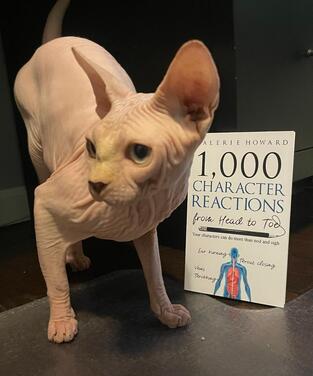
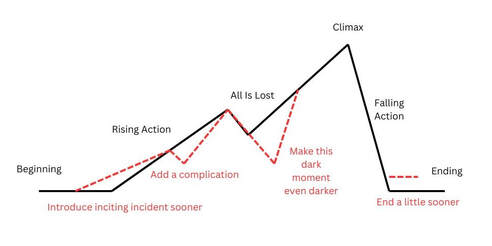
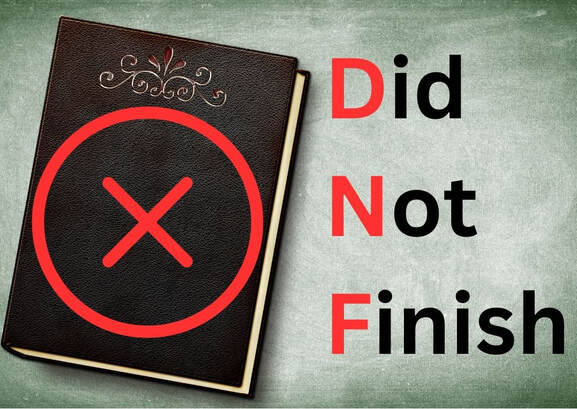
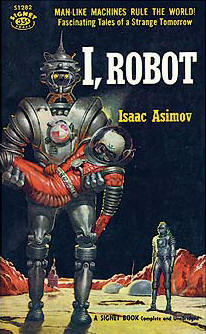
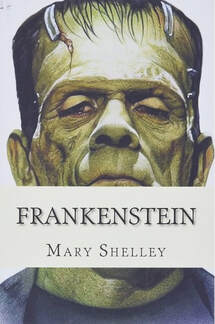
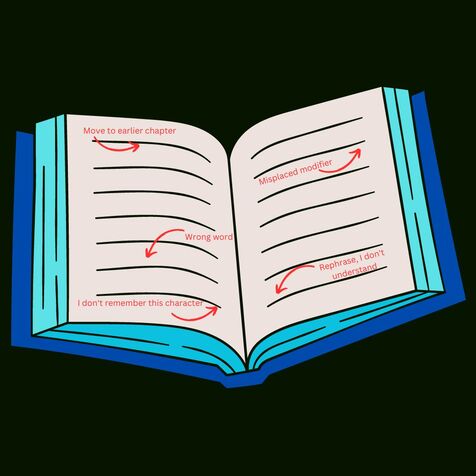
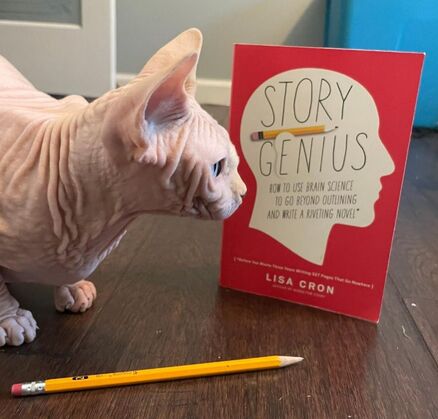

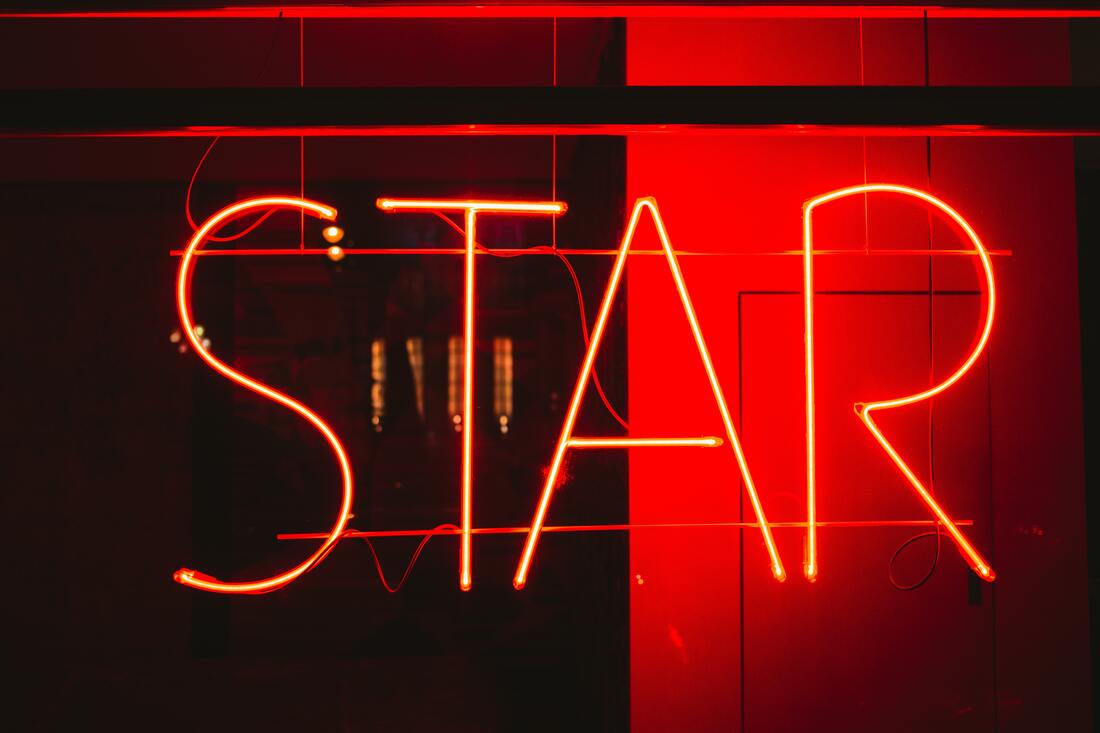
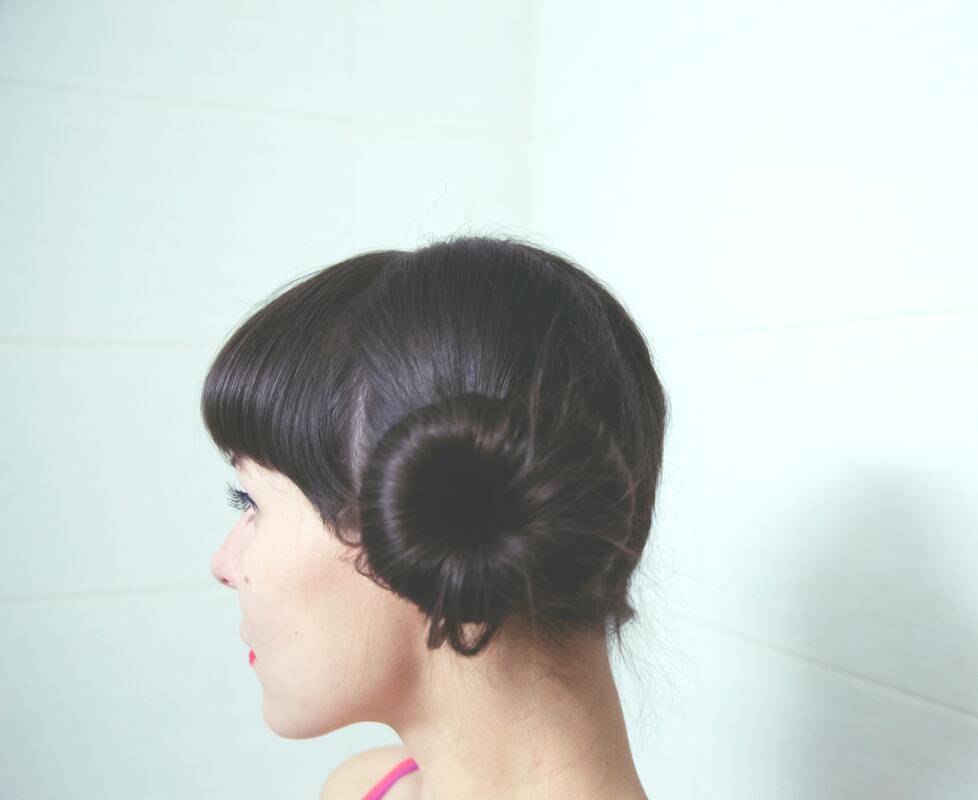







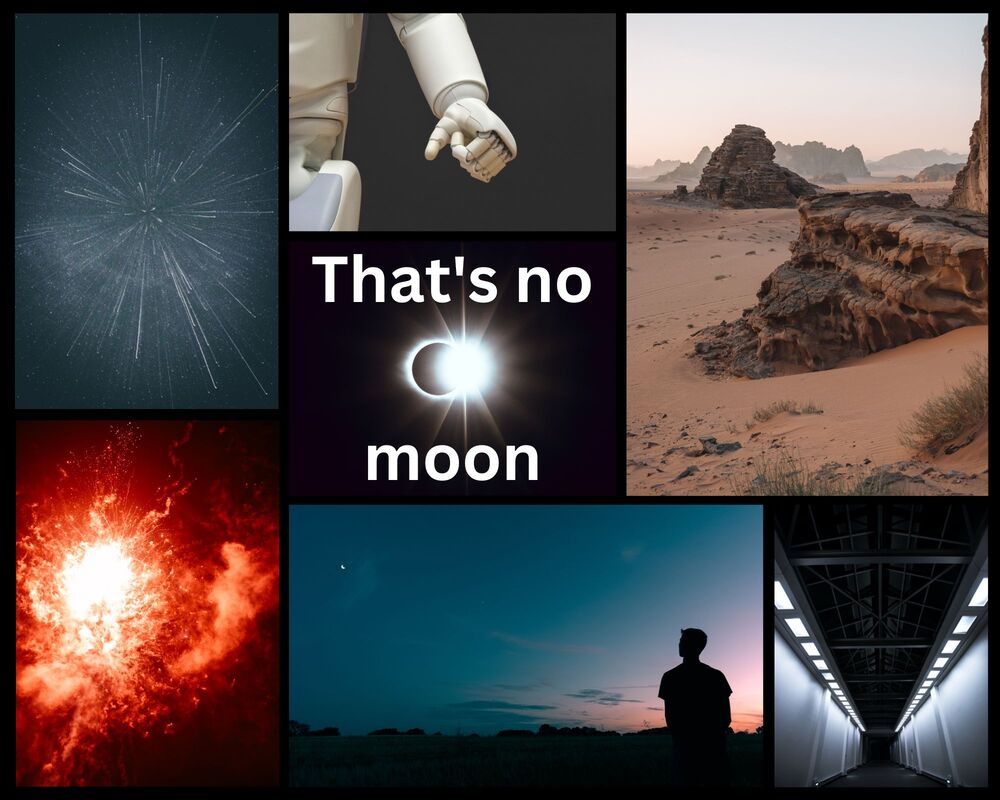

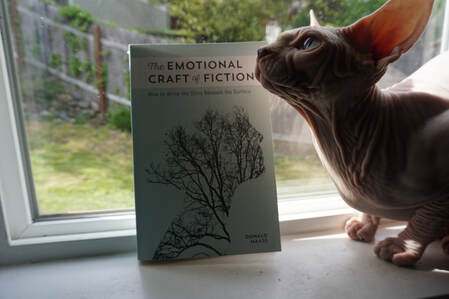
 RSS Feed
RSS Feed